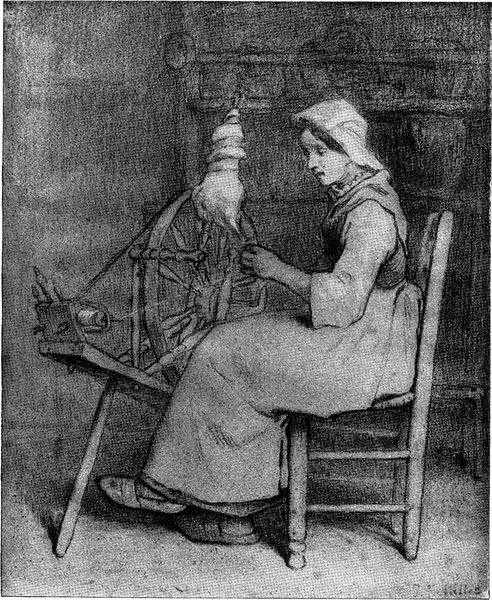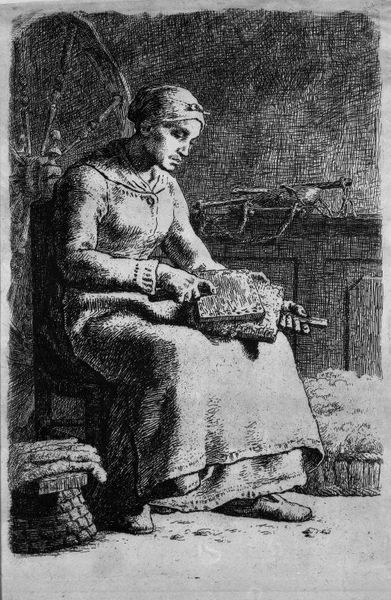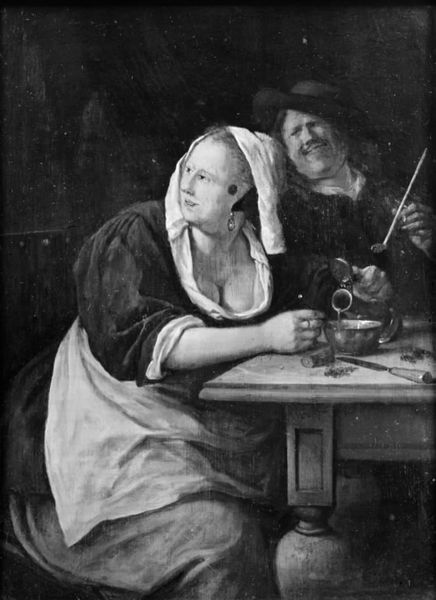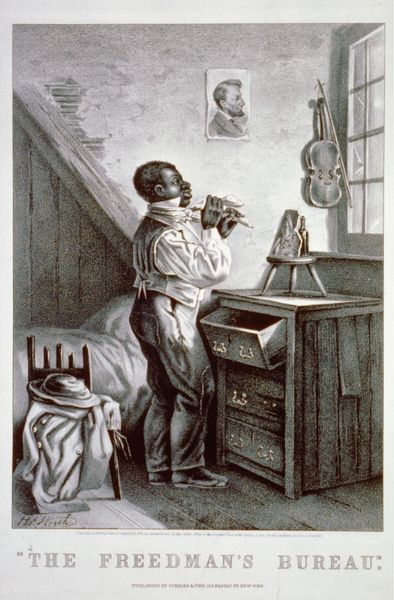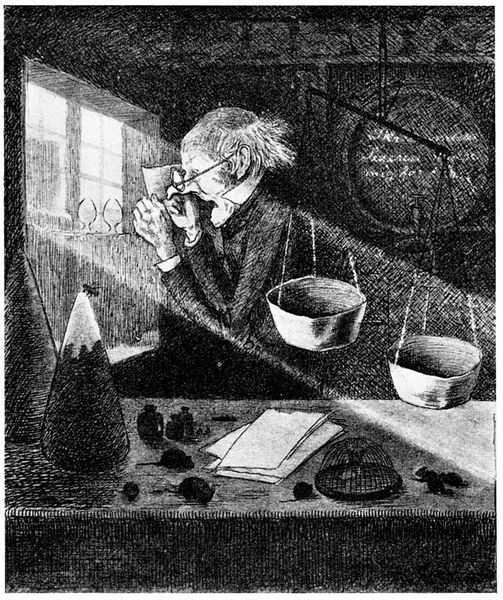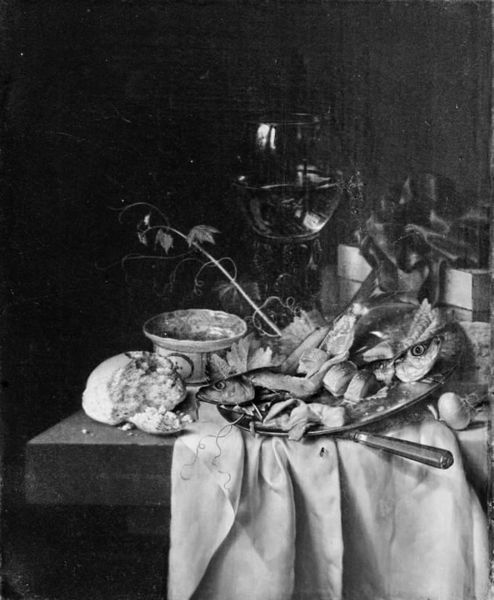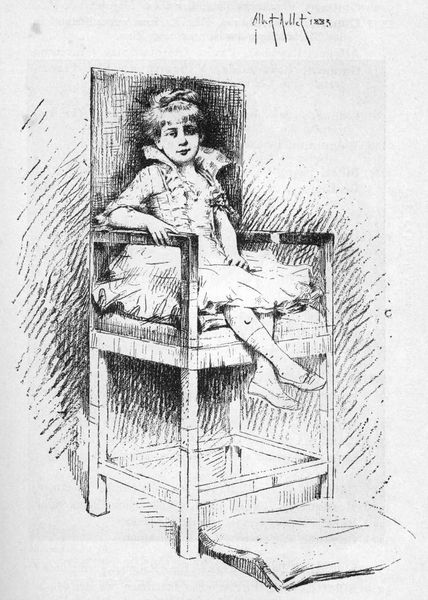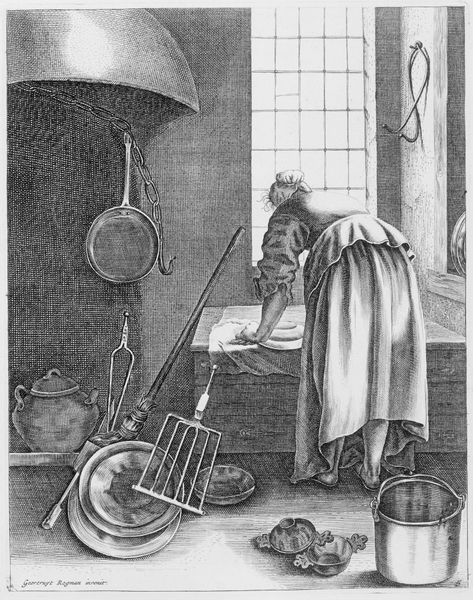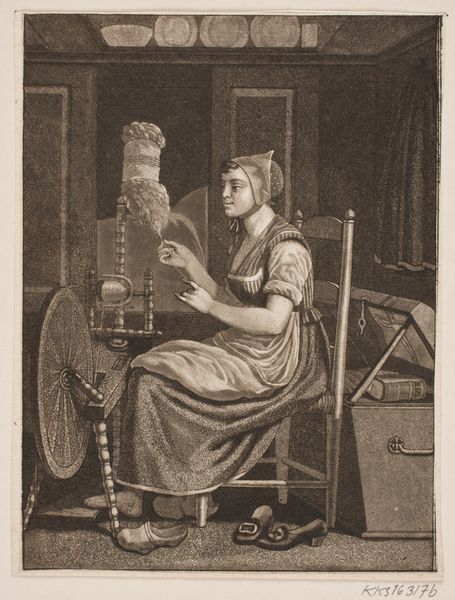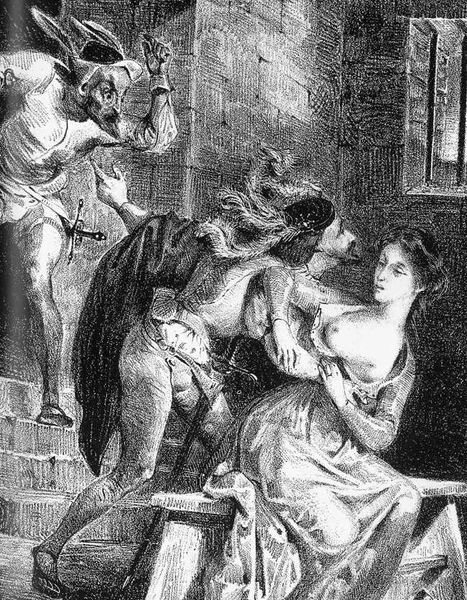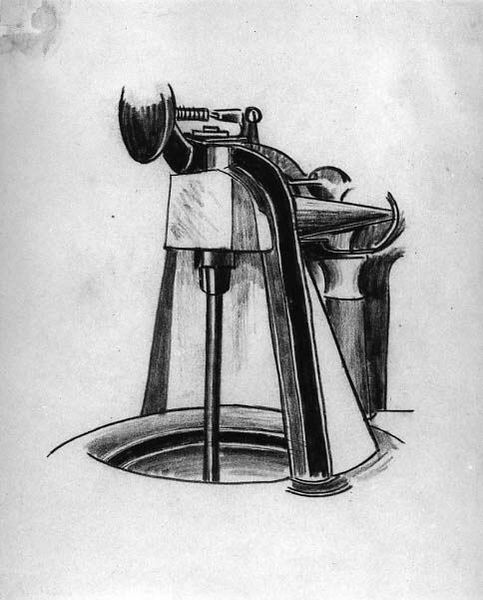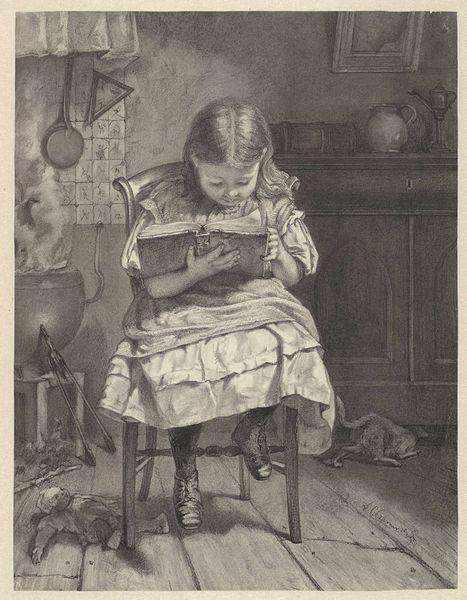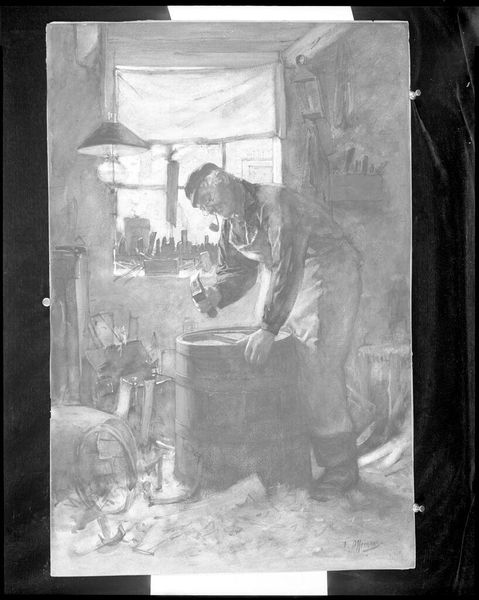
Dimensions: 15 cm (height) x 11 cm (width) (Netto)
Editor: This painting, "Artist's Mother by the Spinning Wheel," by Albert Küchler, dates between 1818 and 1886. Painted with oil paints, its monochromatic quality gives it a somber, almost austere, feel. What historical narratives are evoked for you when you look at this piece? Curator: The image presents an intriguing commentary on 19th-century life. Genre paintings like these, particularly those depicting domestic scenes and labor, became popular. It signifies a broader interest in the lives of ordinary people. Consider how this seemingly simple portrait also subtly reinforces social structures; the mother is depicted engaged in a traditional domestic task, her role within the home defined by this activity. Is that not a little telling? Editor: It is interesting to see domestic work portrayed. How did paintings like this affect or reflect societal views on women at the time? Curator: Paintings such as this helped solidify certain gender roles in the collective consciousness. While ostensibly celebrating motherhood and domesticity, they simultaneously constrained women within the domestic sphere. Art institutions and the patrons who supported them largely dictated the artistic narrative. Can you consider what it meant to see and not see diverse identities represented? Editor: So, it's not just a quiet scene, but a representation of complex societal forces. It makes you consider art as a reflection of more than what's obviously in frame, doesn't it? Curator: Precisely. Art is rarely created in a vacuum. This work serves as a reminder of how social expectations can shape not only life, but its representation as well. I am intrigued by what further insight it grants into gender discourse as it exists in culture. Editor: That's a great perspective to keep in mind when looking at art! Curator: I am pleased you see its potential and implication.
Comments
No comments
Be the first to comment and join the conversation on the ultimate creative platform.
